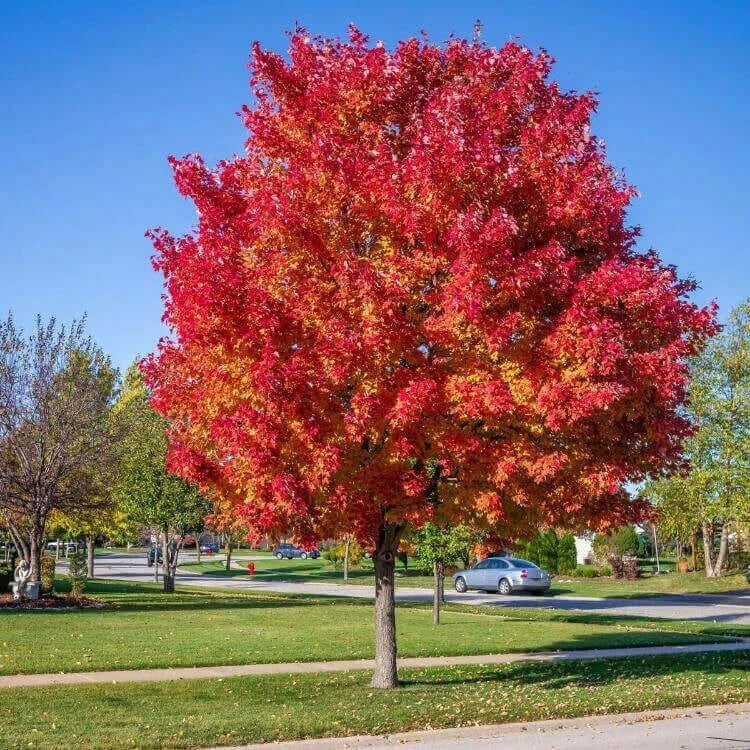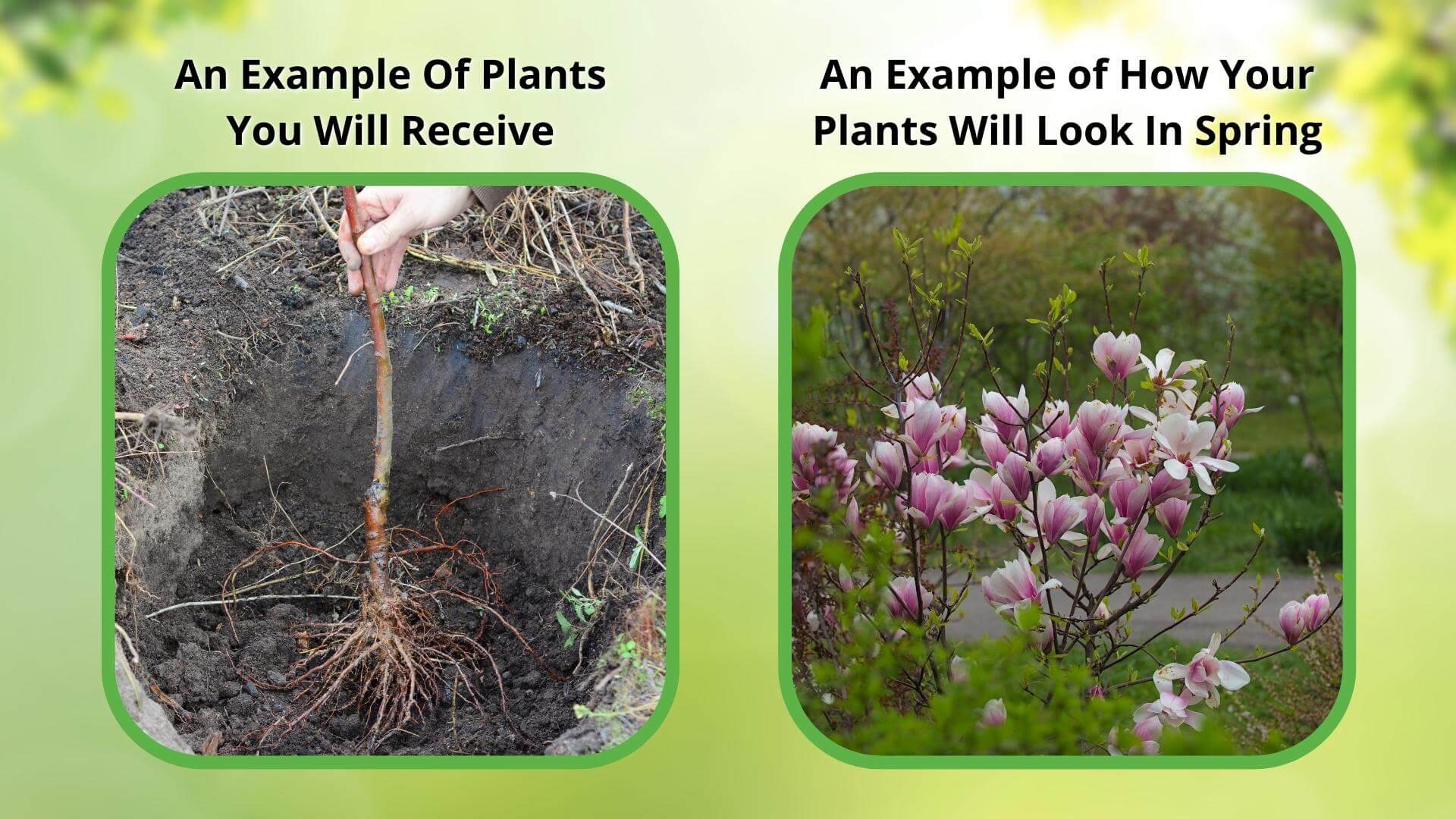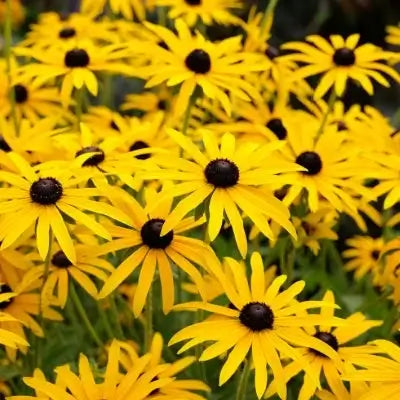Bald Cypress Tree - Taxodium Distichum
Bald Cypress Trees enhance the beauty of your landscape and provide unique features and benefits. Look no further than this! This impressive tree is not just another green giant; it's a deciduous conifer with a fascinating ability to thrive in various environments, especially wetland areas.
With its impressive height and seasonal transformations that showcase stunning fall colors, they stand out in any garden. In this guide, we'll explore everything you need to know about planting, caring for, and appreciating this remarkable tree, whether you're a seasoned gardener or just starting your landscape journey. Let's dive in!
Taxodium distichum is a unique deciduous conifer known for its impressive height, reaching up to 50-70 feet, and its remarkable adaptability to various soil types, thriving particularly in wetland areas.
This tree is distinctive for losing its needle-like foliage each winter, only to regrow it in spring. It showcases a beautiful russet-red color during fall, making it an attractive choice for landscaping.
Characteristics of Bald Cypress Trees
The Taxodium distichum stands out for its impressive height-growing up to 70 feet and its remarkable adaptability to diverse environmental conditions. This resilience is particularly evident in its natural habitat, where it flourishes in wetlands and coastal regions of the Southern U.S.
Its ability to thrive in wet, dry, or swampy soils is a testament to its hardy nature. However, while it can withstand various soil conditions, it prefers acidic soils, often manifesting chlorosis when planted in alkaline environments.
Unique Features Of The Bald Cypress Tree
One of their most captivating features is its unique root system, which includes knees or pneumatophores. These woody projections rise above the waterlogged ground and are commonly associated with them.
Picture these intriguing structures emerging from the water's surface; they create an enchanting landscape and offer an essential function for the tree's health.
In addition to its striking knees, the seasonal transformations of this tree further enhance its visual appeal.
Seasonal Changes
Unlike many conifers that proudly retain their green needles year-round, the Bald Cypress undergoes a brilliant seasonal transformation. It sheds its needle-like leaves each winter, revealing a bare but majestic silhouette against the sky.
Just before this annual shedding, the foliage turns a breathtaking russet-red in autumn, creating a picturesque scene that captivates nature lovers and horticulturists alike. This seasonal change contributes to its nickname as the "bald" cypress- a peculiar yet fitting descriptor distinguishing it among tree species.
The average height of a mature one ranges from 50 to 70 feet, with some exceptionally robust specimens reaching even taller heights. These trees typically thrive for over 600 years under optimal conditions. Their fibrous bark, with its reddish-brown hue and stringy texture, adds another layer of visual interest.
Understanding these characteristics enhances your appreciation for this unique tree and highlights how these traits influence its care and planting considerations. As we explore further, we can gain insights into where this magnificent tree naturally thrives and how it adapts to various environments.
Habitat and Adaptations
The Taxodium distichum is a fascinating tree deeply rooted in the wetlands of the Southern United States. It finds its home in swampy areas, stream banks, and coastal habitats. This remarkable capacity for thriving in such varied environments allows it to flourish in conditions most trees might find challenging. While they can survive in various soil types, they exhibit a distinct preference for acidic soils- a detail that can guide planting decisions.
Adaptability to Waterlogged Conditions
One of their most interesting features is their exceptional adaptability to waterlogged conditions. These trees have evolved remarkable structures known as pneumatophores, commonly referred to as "knees." These woody projections emerge from their roots and provide essential functions; they help stabilize the tree while facilitating gas exchange in low-oxygen environments often found in saturated soils. Essentially, these knees act like breathing tubes and anchors, allowing the tree to thrive despite flooding.
Interestingly, while they are known for their robustness in wet conditions, they also have an uncanny ability to adapt to drier circumstances if given adequate care. With proper attention to irrigation and soil health, these trees can transition from swamp dwellers to resilient landscape features.
Additionally, knees offer ecological benefits beyond survival; they support biodiversity by providing habitats for various organisms and helping prevent soil erosion. Thus, they stabilize themselves and foster a dynamic ecosystem around them.
Understanding this incredible adaptability sets the stage for exploring essential techniques to ensure your tree thrives in its new environment.
Planting and Watering Tips
When planting one, your first priority should be selecting an appropriate location. These trees thrive best in spots with full sun or partial shade but also require ample growing space. A well-placed one can reach impressive heights of up to 50-70 feet while spreading wide. Ensure you give it room not just for upward growth but also for its branches to extend laterally.
Proper Planting Techniques
Let's break down the planting process to make it simple.
-
Choose the Right Spot: After determining the ideal sunlight exposure, clear any debris or competing plants from the chosen area to help your young tree establish without competition for nutrients.
-
Dig the Hole: The size of your hole matters significantly.
-
Position the Tree: Once your hole is ready, carefully position your tree into the ground. Ensure that the root collar area where the roots meet the trunk is level with the ground surface; planting too deep can suffocate roots.
-
Backfill and Water: After placing the tree, fill in the hole with a mixture of original soil and compost-this provides nutrients right from the start. Thoroughly water the area to settle the soil around the roots, removing air pockets that might inhibit growth.
Now that you've successfully planted your tree let's discuss how to pay special attention to its watering needs during the initial stages.
Watering Schedule
The first year after planting is critical for establishing a healthy root system in yours. Therefore, adhere strictly to a consistent watering schedule. Provide deep waterings every one to two weeks, allowing the soil to dry out slightly between these waterings to prevent root rot. If overly wet roots are left unchecked, this condition can swiftly kill young trees.
As yours matures, it becomes increasingly drought-tolerant. Monitor moisture levels and adapt accordingly-look for drooping or browning foliage as indicators of distress.
By carefully following these planting and watering guidelines, you're laying a solid foundation for what could be a magnificent addition to your landscape for generations.
With proper care in place for your new tree, understanding its nutritional needs will further enhance its growth and longevity.
Soil and Nutrient Requirements
They are known for their flexibility and resilience, yet they also have specific soil composition needs. Ideally, these stately conifers flourish in a pH range of 5.0 to 7.5, emphasizing slightly acidic conditions.
This means that while they can adapt to various soil types sandy, loamy, or clay-they will perform optimally in well-drained, acidic soils that mimic their natural wetland habitats. If you are dealing with alkaline soil, don't worry; sulfur can be your friendly ally, helping lower the pH level and creating a more welcoming environment for your tree.
However, it's not just the soil's pH that matters; the nutrients present within that soil play a vital role in your overall vigor.
Optimal Nutrient Needs
Fertilization is key to ensuring yours gets the nutrients it craves. It's best to apply a balanced, slow-release fertilizer come springtime to support robust new growth during the growing season. This strategy helps your tree establish itself effectively as it awakens from winter slumber. However, steer clear of high-nitrogen fertilizers that promote rapid but weak shoot growth-you want your tree to have strength and stability, not risk breaking under its weight.
"Mulching with organic materials not only retains moisture but also enriches your tree's soil over time."
Organic mulch serves multiple purposes: it protects against temperature fluctuations, suppresses weeds, and provides essential nutrients as it decomposes. Think of it as your floral fortress! As it breaks down, mulch gradually enriches the soil with nitrogen and other vital elements like phosphorus and potassium-key players in supporting healthy root development and foliage.
Having examined how critical soil quality and nutrient availability are, we now shift our focus to potential challenges you may encounter as you nurture yours.
Common Challenges and Solutions
Despite their resilience, they aren't immune to issues that can hinder their growth and health. Environmental factors and pests can pose risks that may lead to significant damage.
One common challenge is twig blight, which looks like dieback on young shoots. When witnessing this, promptly pruning away the affected branches can prevent the blight from spreading.
Environmental Conditions
Not only do biological threats affect these majestic trees, but environmental conditions also play a significant role in their health. Poor drainage leads to root rot, a silent killer that can be hard to detect until it's too late. Plant them in areas where water doesn't pool, and consider raised beds if necessary to ensure proper drainage.
By effectively addressing these concerns, you'll ensure that yours remains a vibrant feature in your landscape. Exploring its features and uses further highlights its potential to enhance the beauty and function around your property.
Benefits and Landscaping Uses
One of the standout features of the Taxodium distichum is its ecological and aesthetic value. These trees boast a broad canopy that provides ample shade. As summer fades, you'll find joy in their russet-red fall foliage, which adds a splash of seasonal beauty with every leaf that falls. More than just eye candy, these majestic trees play an important role in supporting local biodiversity; their branches are home to various wildlife species, including birds and insects that rely on them for shelter and sustenance.
Ecological and Aesthetic Value
The relationship between them and the ecosystems they inhabit is fascinating. They thrive in wetland areas and can even tolerate flooding, which makes them incredibly valuable for soil stabilization. Their presence helps maintain water levels and prevent erosion. Imagine walking along a serene pond surrounded by these trees-their knee roots emerging from the ground not only create visually stunning scenes but also serve essential roles in the soil structure that supports your garden's health.
Landscaping Uses
When it comes to landscaping applications, they shine brightly. Their vertical growth forms an appealing natural screen, ideal for creating visual interest in larger gardens or green spaces. Consider incorporating cultivars like Peve Minaret, which maintains a more compact size suitable for smaller yards without sacrificing charm. This dwarf variety is gorgeous and can be strategically placed near patios or seating areas to enhance your outdoor experience.
Moreover, their strong wood and root systems offer excellent wind resistance, making them effective as natural windbreaks against harsh weather conditions. Picture a row of them standing tall against chilling winds; they'll protect your garden's delicate plants while improving your outdoor vibe with their graceful presence.
Additional Benefits
| Benefit |
Description |
| Erosion Control |
Helps stabilize soil in flood-prone areas |
| Wind Resistance |
Strong wood and root system withstand high winds |
| Carbon Sequestration |
Acts as a carbon sink, contributing to climate change mitigation |
| Longevity |
Can live for centuries, providing long-term landscape value |
On top of their aesthetic qualities, their environmental impacts cannot be understated. These trees actively combat climate change through carbon sequestration-essentially acting as natural air filters while enriching the local ecosystems around them. With proper care and placement, you are investing in more than just a tree; you're adding a long-term companion that will contribute positively to the environment for future generations.
By understanding these benefits alongside practical planting techniques, you can unlock their full potential in your landscape, ensuring your space flourishes beautifully year after year.
The diverse ecological benefits and charming appearance make Bald Cypresses an exceptional choice for any landscape project. Enrich your surroundings today by choosing this sustainable tree that celebrates nature and beauty.















